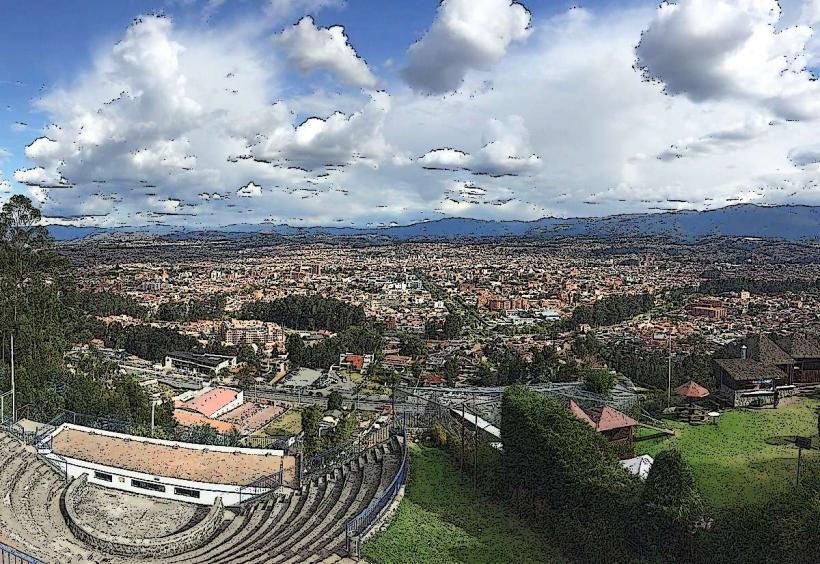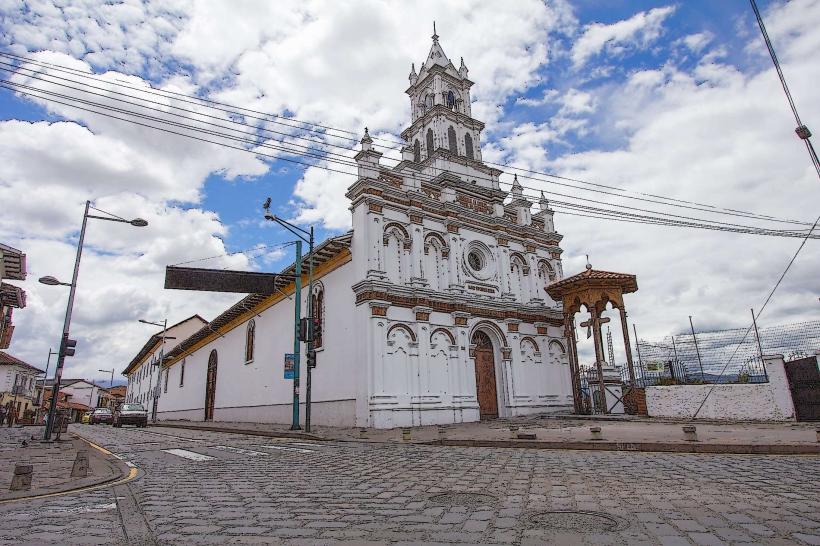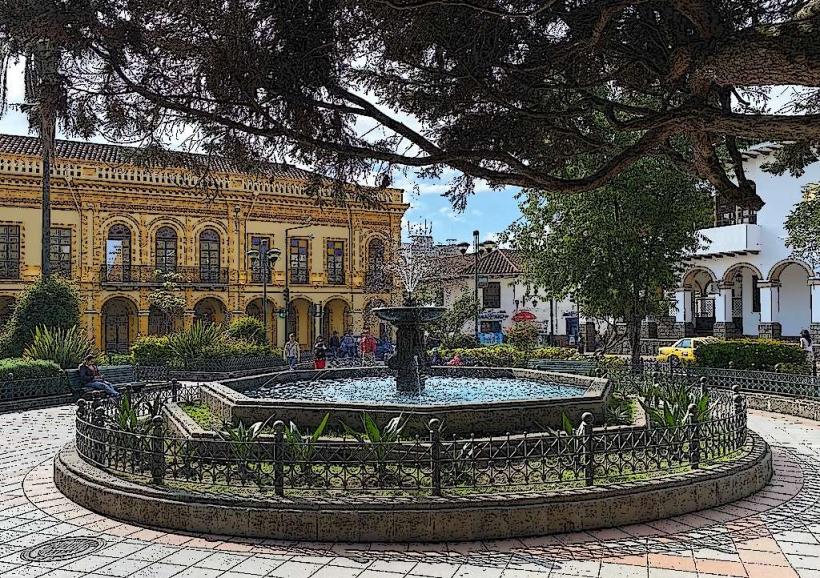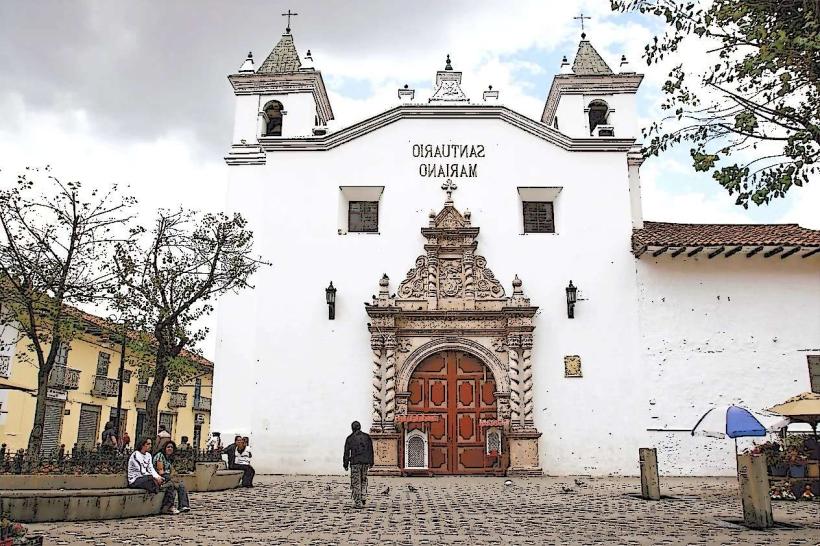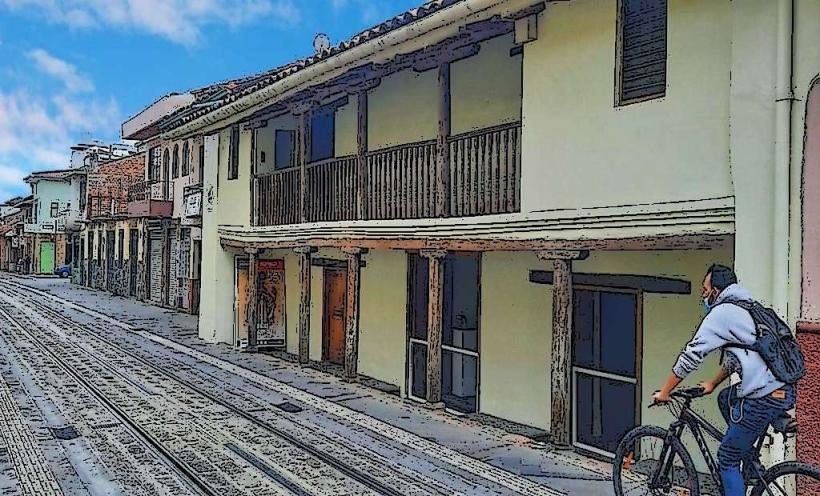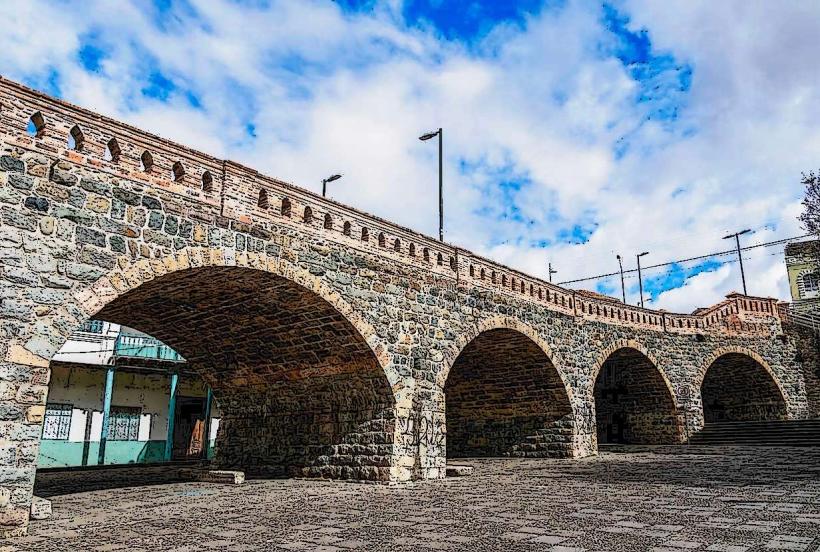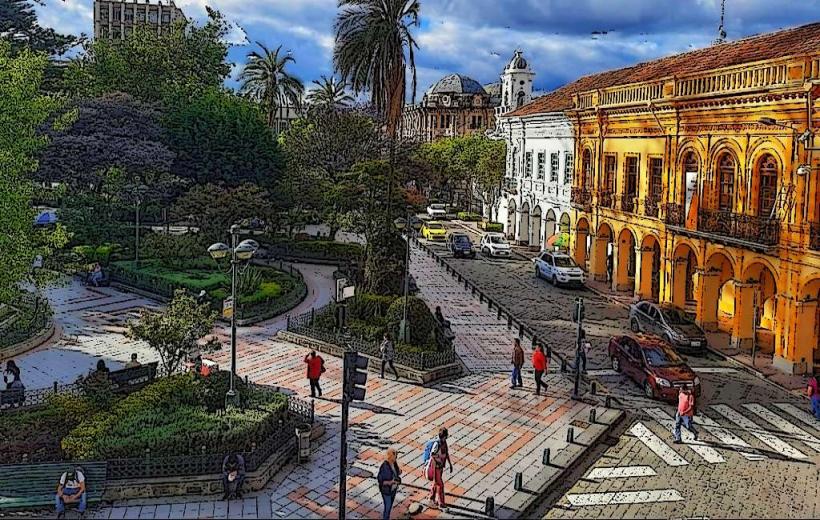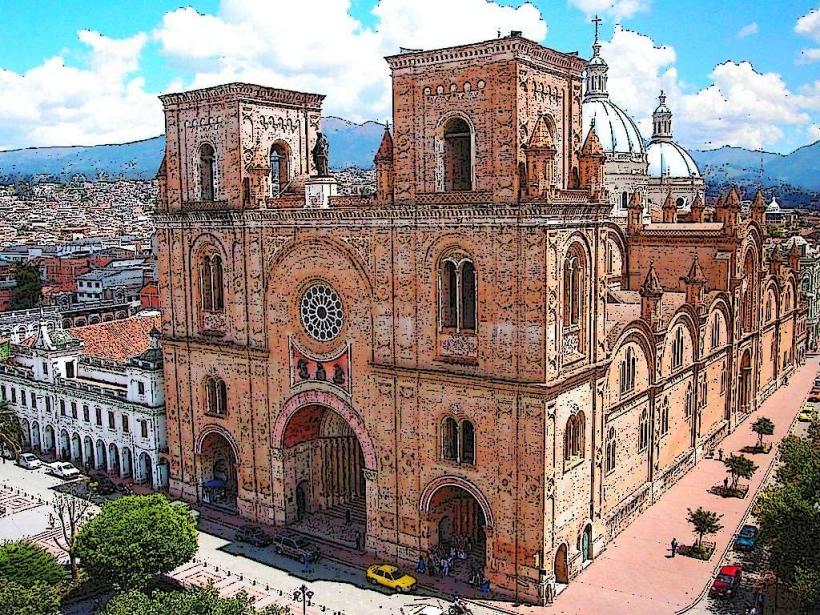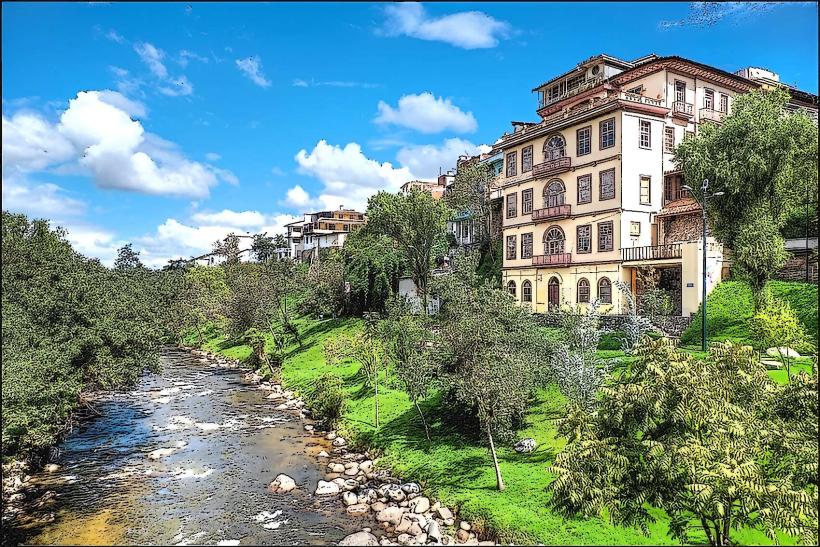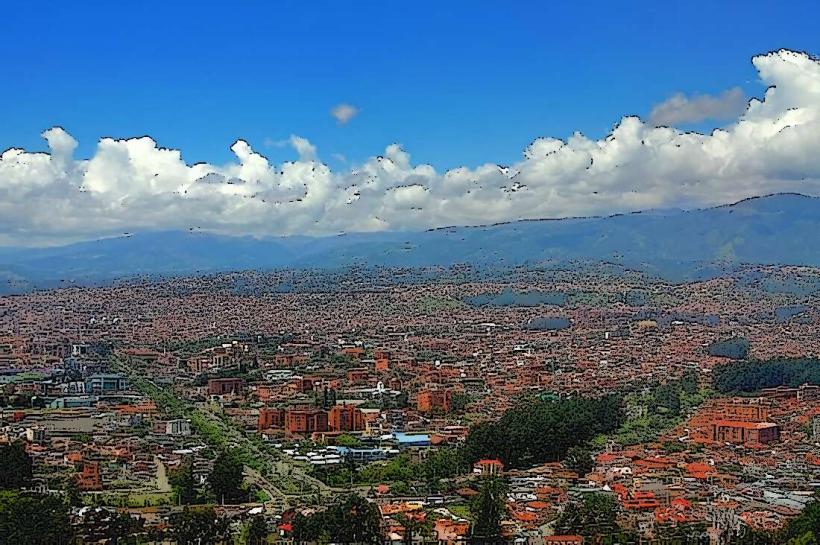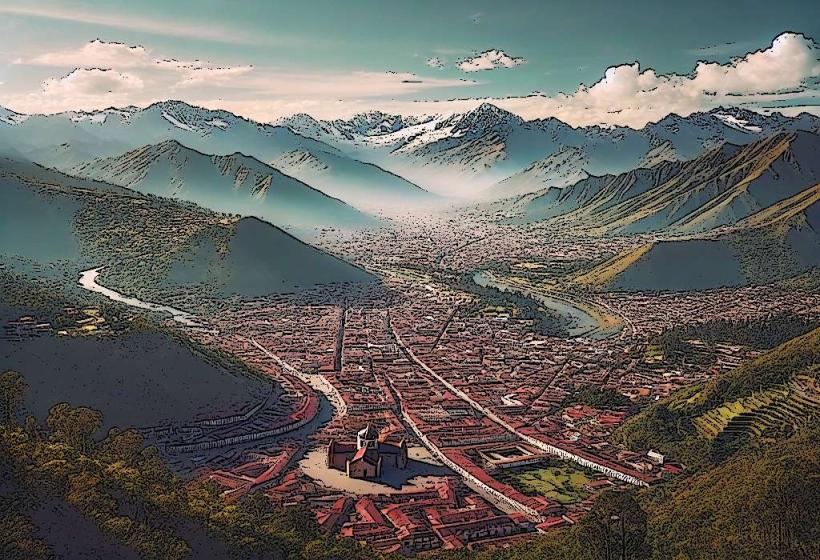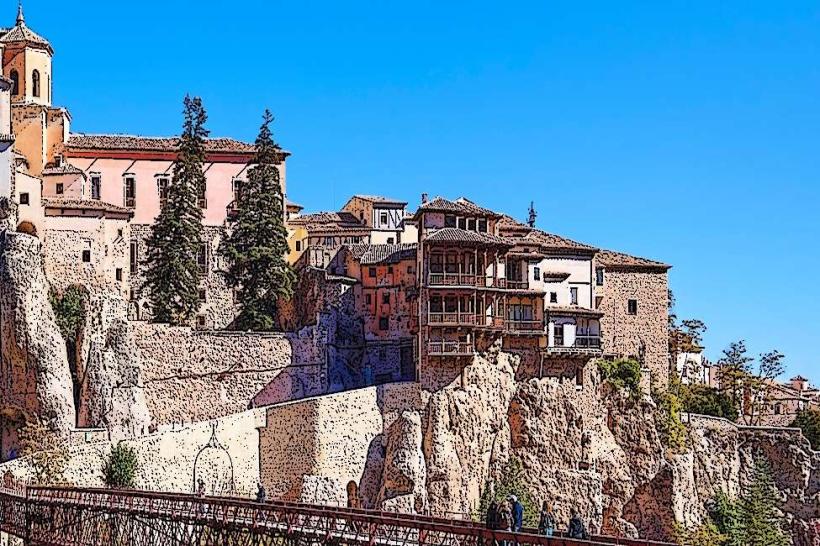Information
Landmark: Parque Nacional CajasCity: Cuenca
Country: Ecuador
Continent: South America
Parque Nacional Cajas, Cuenca, Ecuador, South America
Overview
Curiously, High in the Andean highlands of Azuay province, not far from Cuenca, lies Parque Nacional Cajas-one of Ecuador’s most breathtaking reserves, where icy lakes glint under a wide, wind-swept sky, besides spanning about 28,000 hectares-roughly 69,000 acres-the park unfolds in rugged mountains, dense green forests, glassy alpine lakes, and teems with remarkable wildlife.The park sits high in the mountains, rising from 3,150 meters (10,330 feet) to a chilly 4,450 meters (14,600 feet) above sea level, after that the Andes rise over the land, their jagged peaks, sharp ridges, and deep valleys cutting through the sky.Cajas is famous for its striking landscapes-jagged rocky outcrops, shadowed ravines, and a chain of shimmering lakes carved long ago by glaciers, along with the park’s lakes stand out among its features, with more than 230 lagoons scattered across the land.Some stretch wide enough to catch the wind, and they provide vital water for the nearby communities, equally important the park has winding rivers and clear streams that cut through its valleys, their waters joining downstream to feed the wide, fleet-moving Paute River.Truthfully, Snow-capped peaks rise above deep green valleys, and together they give Cajas National Park a breathtaking charm that draws both hikers and nature lovers, likewise flora and Fauna Cajas National Park is famous for its rich mix of wildlife and plants, from dazzling orchids to darting hummingbirds, for the most part The park shelters a range of ecosystems, from windswept high-altitude páramo to misty cloud forests, each alive with species found nowhere else, meanwhile flora: Páramo Vegetation - In the high-altitude páramo, hardy plants cling to the rocky soil, built to endure freezing nights and sudden storms.You’ll find grasses, low shrubs, and tiny plants such as the purple-flowered Andean lupine (Lupinus spp.), along with towering clusters of frailejones built to survive the crisp, thin air of high mountain slopes, equally important cloud Forest: Mist clings to the trees at the park’s lower slopes, where the forest flourishes.Moss carpets the ground here, while ferns, orchids, and vivid bromeliads crowd the air with color, while in the cloud forest, thin veils of mist drift between the trees, the air heavy with dampness, creating a rare ecosystem where plants thrive in the cool, shaded air.Native trees here include the Andean oak (Quercus humboldtii), its broad leaves sheltering birds and its acorns feeding squirrels and other wildlife throughout the park, not only that cajas is home to several mammals, among them the endangered Andean bear (Tremarctos ornatus), or spectacled bear, the only bear that roams South America’s wild highlands.The park’s mammals range from deer and rabbits to rodents like the highland guinea pig, or “cuy,” often seen nibbling grass, to boot it’s also a birdwatcher’s haven, home to more than 150 recorded species.That list includes the Andean condor (Vultur gryphus), tiny hummingbirds that flash iridescent green, and a range of colorful toucans and parrots, as a result certain birds live only in this region, which makes Cajas a vital refuge for conserving them-like the highland hummingbird that flashes green in the morning sun.Reptiles and amphibians thrive here too, from tiny green frogs calling at dusk to lizards basking on warm rocks, all adapted to the park’s high-altitude air, also cajas National Park draws outdoor lovers with its wide-open trails and easy-to-reach paths, making it a favorite spot for hiking among its rolling hills and shimmering lakes.Funny enough, Hiking Trails: The park has plenty of paths, from gentle strolls circling the glassy lakes to steep climbs that wind into the mountains, likewise the Laguna Toreadora is a favorite hike, looping around a clear blue lake with mountain peaks rising in the distance.As it turns out, Seasoned hikers can tackle the Inca Trail-different from Peru’s famous route-for a longer, tougher climb that winds through steep mountain passes, where the air feels thin and clear, and past several of Cajas’ mirror-like lakes, not only that wildlife Watching: With its rich mix of species, the park is a great locale to spot shining-feathered birds and catch glimpses of animals moving quietly through the trees.At first light, you’ve got the best chance to discover Andean condors gliding over the cliffs or catch a glimpse of a spectacled bear moving quietly along the far ridge, what’s more if you love plants, Cajas is full of wonders-you can spot rare orchids glistening with morning dew and discover other endemic species tucked away in its misty cloud forests, slightly Fishing and camping are popular here, and Cajas is especially known for its many trout-filled lakes, therefore you can cast for rainbow trout in many of the park’s crystal-clear lakes, but strict rules protect the water and the fish.The park has set aside specific spots for camping, but pitching a tent anywhere else is off-limits to help protect the land and its quiet, pine-scented air, equally important at the park’s high perch, the air feels crisp and the skies stay crystal clear, making it a perfect spot to stretch out by the fire and watch the stars spill across the night, slightly often Cajas National Park sits high in the mountains, where thin air keeps the days cool and the mist often clings to the grass, what’s more temperatures usually range from about 5°C (41°F) to 15°C (59°F), though up on the ridges the wind can bite harder, making it feel much colder.Truthfully, From October to April, rain shows up often-sometimes a steady drizzle, sometimes a quick downpour-so pack a jacket and be ready for wet weather, likewise if you want the best experience in Cajas, go between June and September, when the air is crisp, the trails stay dry, and hiking feels effortless.Funny enough, Still, visitors should be ready for rain and sudden shifts in the weather, even in midsummer when the air can turn sharp and cool without warning, along with cajas National Park plays a vital role in conserving the Andean highlands, sheltering rare wildlife like the shimmering Andean teal.The park shelters endangered plants and animals, from rare orchids to shy river otters, and protecting it is vital to keeping the region’s ecosystem in balance, in turn the Ecuadorian government teams up with conservation groups to safeguard the park’s rare ecosystems and stop the exploitation of its resources, from illegal logging to the sharp crack of a hunter’s rifle.Cajas carries deep cultural meaning, cherished by the region’s Indigenous peoples-some still tell vintage stories of the mountains at night, besides the park sits on ancestral lands once home to several Indigenous peoples, among them the Cañari and the Inca, where stone paths still wind through the hills.Interestingly, Scattered around the park are several archaeological sites, from weathered stone walls to faint carvings, marking it as a location rich in history and spiritual meaning, as well as in conclusion, Cajas National Park in Ecuador dazzles with its mirror-like alpine lakes, rugged mountain peaks, diverse ecosystems, and an abundance of unique plants and wildlife.Whether you’ve logged countless miles on mountain trails, simply love the quiet rustle of leaves, or are curious about Ecuador’s rich ecosystems, this park draws you in with the crisp scent of high-altitude air and sweeping Andean views that linger in your memory.
Author: Tourist Landmarks
Date: 2025-09-18



